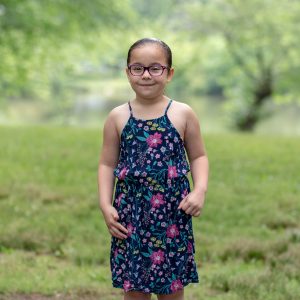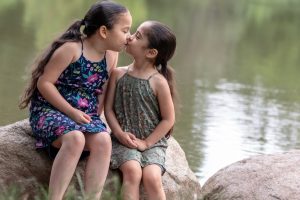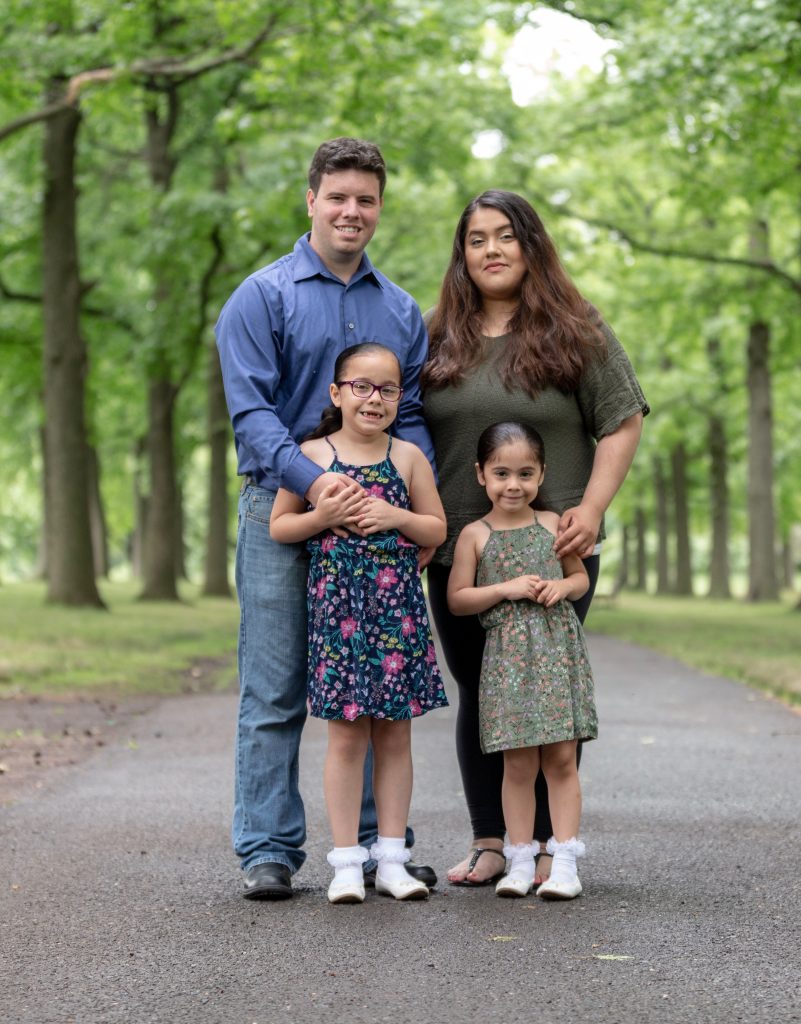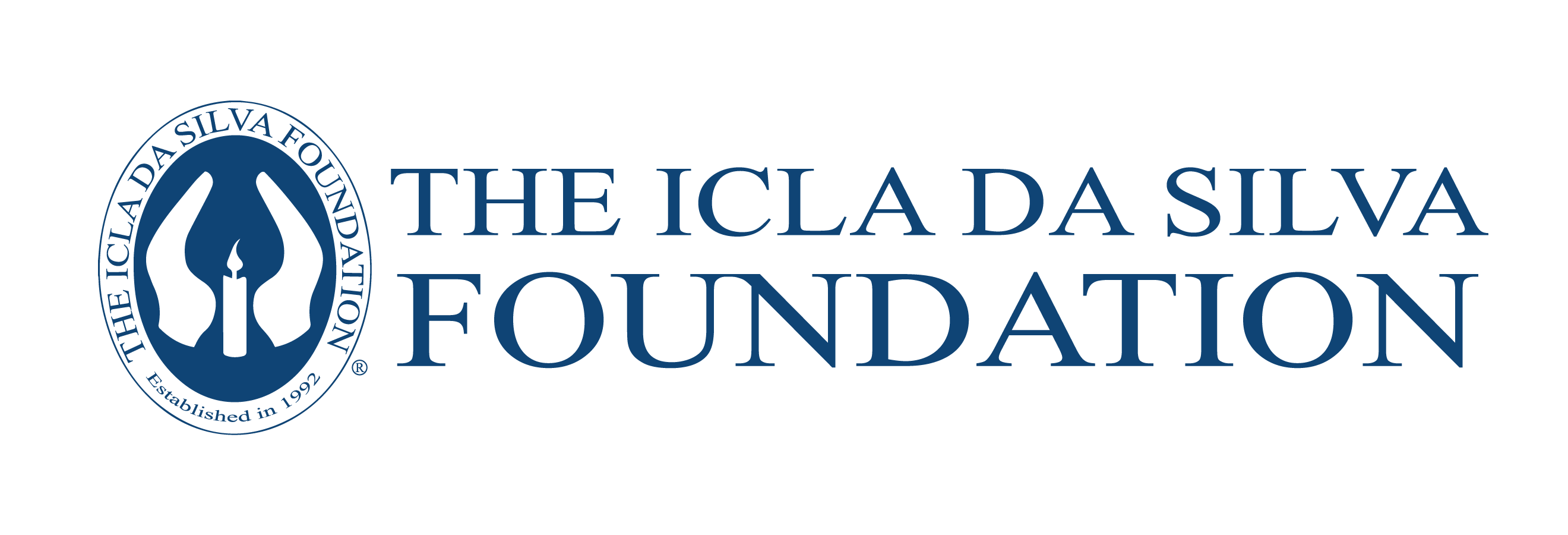June 24, 2018 | News, Patient Stories
Veronica’s Story – Searching for a Matching Donor
It was winter and she had a bad cold. The cold had triggered an asthma attack and her parents were worried. They took her to the emergency room. The attending doctor ordered a chest x-ray to rule out pneumonia. Veronica did not have pneumonia…but the radiologist was concerned. Her bones appeared larger than normal for a girl of her age.
After a year of referrals to various doctors – endocrinologists, metabolic specialists, radiologists, and hematologists, after multiple rounds of bloodwork, genetic testing and numerous x-rays, it was determined that Veronica Depauli had hardened bones throughout her body. In March 2016, Veronica was diagnosed with a form of osteopetrosis (autosomal dominant osteopetrosis type 2, or ADO2). ADO2 is a rare disorder characterized by increased bone density and abnormal bone growth, which can lead to recurring fractures, vision loss, hearing loss and facial paralysis. It can also impair the function of bone marrow, because the bones are growing at a disproportionate rate, which will prevent the body from producing new blood cells and immune system cells.
 Veronica Depauli is a beautiful, intelligent 7 year old girl. She likes singing and art. You wouldn’t know it by watching her draw, or play with her younger sister Annabelle, that she has a rare disease. You wouldn’t know that her optic canals continue to narrow, which may result in vision loss, or that her bone marrow space has diminished, although it still continues to function. With each passing day, the severity of her symptoms continue to increase. Her little sister helps distract Veronica whenever she is in pain. She brings her ice packs and coloring books and tries to get her to smile by singing. She does the best she can to help her big sister.
Veronica Depauli is a beautiful, intelligent 7 year old girl. She likes singing and art. You wouldn’t know it by watching her draw, or play with her younger sister Annabelle, that she has a rare disease. You wouldn’t know that her optic canals continue to narrow, which may result in vision loss, or that her bone marrow space has diminished, although it still continues to function. With each passing day, the severity of her symptoms continue to increase. Her little sister helps distract Veronica whenever she is in pain. She brings her ice packs and coloring books and tries to get her to smile by singing. She does the best she can to help her big sister.
Veronica Needs Our Help
Veronica Depauli needs a bone marrow transplant. Her doctors believe it can markedly improve her osteopetrosis and offers the best chance for longer-term survival.
 The challenge with every bone marrow transplant is finding a matching donor. The difficulty is finding someone who has a similar HLA type to yours. HLA is a protein, or a marker, found in most cells in your body. Your immune system uses these markers to recognize which cells belong in your body, and which do not. When two people share an ethnic background, there is a better chance that their HLAs will match up and a transplant can take place.
The challenge with every bone marrow transplant is finding a matching donor. The difficulty is finding someone who has a similar HLA type to yours. HLA is a protein, or a marker, found in most cells in your body. Your immune system uses these markers to recognize which cells belong in your body, and which do not. When two people share an ethnic background, there is a better chance that their HLAs will match up and a transplant can take place.
Unfortunately, there are currently no matches in the national database for Veronica. Currently, Hispanic and Latino patients only have a 46% chance of finding a matching donor. This is because only 11% of the current donor pool are Latino. Veronica’s mother, Elise, is of Peruvian/Ecuadorian descent. Her father, Federico, is Uruguayan. We need more people of Hispanic and Latino heritage to join the registry.
Finding a Bone Marrow Donor
The Icla da Silva Foundation is working with the Depauli family to help find a matching donor. We are the largest recruitment center for the Be The Match registry and we focus on adding ethnic diversity to the bone marrow registry. As more people of Latino descent are added to the registry, hope is increased for each of the 16,000 patients who are in need of a bone marrow transplant every year.
You can join the registry, and add hope for Veronica, right here:
Veronica’s parents have been very active in spreading the word and trying to get more people to join the registry. Not just for their daughter, but for all of the patients who are in need of a life saving transplant.
“It’s been very discouraging and I am desperate because God forbid my daughter does not get a match” – Elise Luciano, Veronica’s Mom
 “Please help us, what would you do if it were your child, your family…please join the registry, you could save somebody’s life” – Federico Depauli, Veronica’s Dad
“Please help us, what would you do if it were your child, your family…please join the registry, you could save somebody’s life” – Federico Depauli, Veronica’s Dad
Joining the Registry
The steps to join the registry are simple:
- Register online by clicking the link.
- Set-up an account with a password, and answer some basic background and eligibility questions.
- Receive a swab kit in the mail so they can get a copy of your HLA marker by swabbing the inside of your cheek with a q-tip.
- Return the swab kit so you can be added to the registry.
If you match a patient in need of a life saving transplant, the vast majority of bone marrow donations occur through a process called PBSC, which is a non surgical procedure that is very similar to giving plasma. If you would like more information on the typical donation process, please click here.
Despite thier continued challenges, Veronica’s parents hold onto the hope that a matching donor will be found.
“One day my daughter will be pain free, one day my daughter will be able to live just like any other child” -Elise Luciano, Veronica’s Mom
We hope so too Elise.
Please join the registry for Veronica Join the registry

 English
English Spanish
Spanish Portuguese
Portuguese